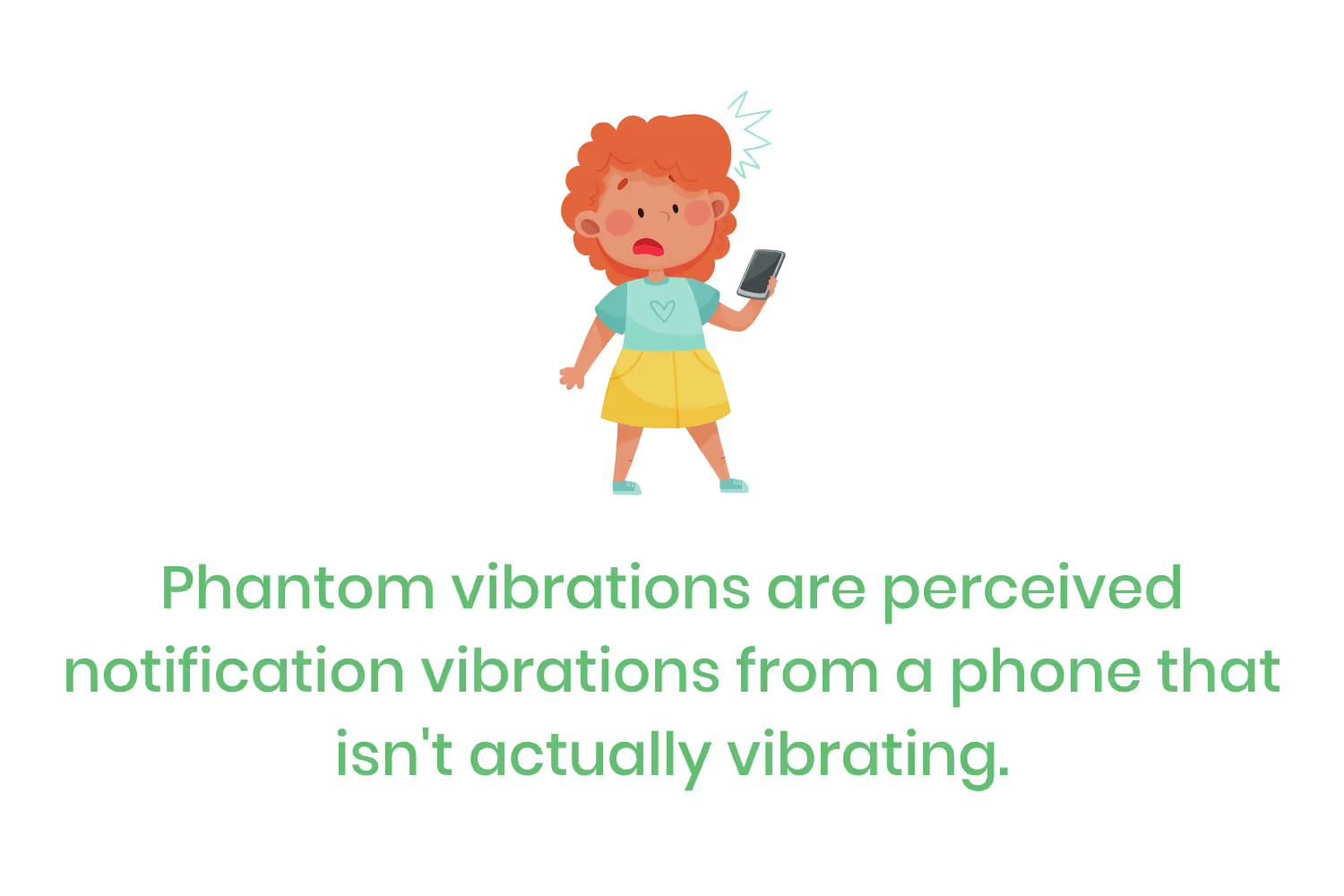40+ Frightening Social Media and Mental Health Statistics
As social media and smartphone use has increased, so have mental health conditions. Here’s our list of 40+ statistics that prove that statement.

Half of the world’s population are mobile Internet users. As of 2019, there were over 5 billion mobile users, according to Data Reportal. Of those people, 2.7 billion of them specifically had a smartphone.
If you don’t already have a smartphone, it’s only a matter of time before you get one. In the past year alone, 100 million people started using one of these devices. This trend has been increasing since their initial release.
Apple released the first modern-day smartphone, the iPhone, in 2007. Samsung followed this up with their Samsung Galaxy in 2010.
This chart below shows the increase in both cellphone and smartphone users.

The increase in smartphones was much sharper than cellphones in general since mobile users were likely switching to smartphones. It was up to 81% in 2019 compared to 35% in 2011.
Of all adult-aged cellphone users, those between 18 and 29 are most likely to have a mobile Internet device. Around 99% of them have any kind of cellphone, and 96% use specifically a smartphone.
These devices are so popular since it’s easier to access the Internet, but especially social media platforms. Using social networks has increased significantly since the release of these smartphones.
By 2017, 69% of adults were using social media compared to just 5% of Americans in 2005.
Social media makes it easy to connect with people from around the entire world. While this is positive, it also has detrimental effects. Some of which have even led to HIPAA violations.
As social media and smartphone use has increased, so have mental health conditions.
Of course, correlation doesn’t always mean causation. But researchers suggest that the increase in mental illness is in part connected to the increase in social media use among young people.
Who Uses Social Media?
Around 86% of 18- to 29-year-olds use these platforms. Another 80% of people aged 30-49 and 64% of people aged 50-64 are on social media. Even one-third of adults over 65 use it, compared to just 10% in 2010.
What’s more concerning is how many teenagers use these platforms. A survey found that 97% of teenagers between the ages of 13 and 17 have at least one account.

Growing Mental Health Concerns
Since the release of smartphones, mental health concerns have increased in children and young adults. The rate of adolescents reporting symptoms of major depression in a given year increased by 52% from 2005 to 2017. From 2009 to 2017, it grew by 63% in adults ages 18 to 25.
Experiencing psychological distress in a given month grew 71% in young adults from 2008 to 2017. Even worse, the rate of suicidal thoughts in young adults increased 47% during that same time.
For older adults, there was no significant increase in these mental health issues during the same periods. Children and young adults experience the most impact. This isn’t a huge surprise since they use social media the most and grew up as digital natives. But the statistics are shocking.
More than one in three adults (38%) see social media use as harmful. Only 5% think that it’s only positive.
Effects on Children and Young Adults
Almost 25% of teens view social media as having a negative effect.

Between 2012 and 2015, depression in boys increased by 21% and in girls by 50%.
By 2015, 92% of teens and young adults owned a smartphone. But, as smartphone use increased, so did feelings of depression.
A 2017 study of 8th to 12th graders found that high levels of depressive symptoms increased by 33% between 2010 and 2015. The suicide rate for girls in this age group increased by 65%.
And it’s only gotten worse.
Child suicide rates increased by up to 150%, and self-harm by girls ages 10 to 14 nearly tripled. These patterns point to social media.
Eight-graders who spend over 10 hours on social media per week are 56% more likely to report being unhappy than those who spend less time on social media.
Spending more than 3 hours on social media per day puts adolescents at a higher risk for mental health problems.
13% of kids ages 12-17 report depression and 32% report anxiety. 25% of 18 to 25-year-olds report mental illness. These age groups report high usage of social media.
59% of US teens experienced cyberbullying or online harassment. 90% say they think this harassment is a problem that affects other people their age. 63% say that it’s a major problem.

Social Media Addiction
People talk about themselves around 30-40% of the time in person. On social media, people talk about themselves 80% of the time. So when they receive a notification of positive feedback, they feel a positive sensation from dopamine.

Receiving positive feedback stimulates the brain to release dopamine. This rewards the behavior associated with social media, thus perpetuating the habit of using it. Dopamine’s motivational properties play a role in addiction.
In 2012, surveys in the US and Europe found the prevalence of Internet Addiction Disorder rates to be between 1.5 and 8.2%. This has since increased which makes sense since social media use is also higher. Between 5% and 10% of Americans meet the criteria for social media addiction.
People have trouble putting their phones down. A study found that 94% of participants reported feeling troubled when they didn’t have their phone. 80% were jealous when someone else used their phone, and 70% expected to feel depressed, panicked, and helpless if their phone went missing or they couldn’t find it.
A study found that 89% of undergraduate students experience phantom vibrations. This is the perception of vibrations from a mobile device that isn’t vibrating. People crave receiving notifications so much that they start imagining them.

Solutions to The Negativity
Limiting social media use is the best way to improve mental health. Using Facebook, Instagram, and Snapchat for only 10 minutes per day for three weeks led to lower loneliness and depression.
But reducing social media use to even 30 minutes per day results in significantly lower levels of:
- Anxiety
- Depression
- Loneliness
- Sleep problems
- Fear of missing out (FOMO)
Conclusion
Smartphones make it easier than ever to connect with people around the world through social media.
The increase in smartphones has also boosted the use of these popular social platforms. But unfortunately, that’s not the only thing increasing.
Mental health issues have gone up steadily following the trendlines from smartphone and social network releases. As more people use them, there are more people with greater health concerns.
Even though people recognize that these sites have negative impacts, it’s difficult to stop using them. Unfortunately, they have addictive effects. But reducing social media use to just 30 minutes per day can significantly help improve our mental health.
Emphasize your product's unique features or benefits to differentiate it from competitors
In nec dictum adipiscing pharetra enim etiam scelerisque dolor purus ipsum egestas cursus vulputate arcu egestas ut eu sed mollis consectetur mattis pharetra curabitur et maecenas in mattis fames consectetur ipsum quis risus mauris aliquam ornare nisl purus at ipsum nulla accumsan consectetur vestibulum suspendisse aliquam condimentum scelerisque lacinia pellentesque vestibulum condimentum turpis ligula pharetra dictum sapien facilisis sapien at sagittis et cursus congue.
- Pharetra curabitur et maecenas in mattis fames consectetur ipsum quis risus.
- Justo urna nisi auctor consequat consectetur dolor lectus blandit.
- Eget egestas volutpat lacinia vestibulum vitae mattis hendrerit.
- Ornare elit odio tellus orci bibendum dictum id sem congue enim amet diam.
Incorporate statistics or specific numbers to highlight the effectiveness or popularity of your offering
Convallis pellentesque ullamcorper sapien sed tristique fermentum proin amet quam tincidunt feugiat vitae neque quisque odio ut pellentesque ac mauris eget lectus. Pretium arcu turpis lacus sapien sit at eu sapien duis magna nunc nibh nam non ut nibh ultrices ultrices elementum egestas enim nisl sed cursus pellentesque sit dignissim enim euismod sit et convallis sed pelis viverra quam at nisl sit pharetra enim nisl nec vestibulum posuere in volutpat sed blandit neque risus.

Use time-sensitive language to encourage immediate action, such as "Limited Time Offer
Feugiat vitae neque quisque odio ut pellentesque ac mauris eget lectus. Pretium arcu turpis lacus sapien sit at eu sapien duis magna nunc nibh nam non ut nibh ultrices ultrices elementum egestas enim nisl sed cursus pellentesque sit dignissim enim euismod sit et convallis sed pelis viverra quam at nisl sit pharetra enim nisl nec vestibulum posuere in volutpat sed blandit neque risus.
- Pharetra curabitur et maecenas in mattis fames consectetur ipsum quis risus.
- Justo urna nisi auctor consequat consectetur dolor lectus blandit.
- Eget egestas volutpat lacinia vestibulum vitae mattis hendrerit.
- Ornare elit odio tellus orci bibendum dictum id sem congue enim amet diam.
Address customer pain points directly by showing how your product solves their problems
Feugiat vitae neque quisque odio ut pellentesque ac mauris eget lectus. Pretium arcu turpis lacus sapien sit at eu sapien duis magna nunc nibh nam non ut nibh ultrices ultrices elementum egestas enim nisl sed cursus pellentesque sit dignissim enim euismod sit et convallis sed pelis viverra quam at nisl sit pharetra enim nisl nec vestibulum posuere in volutpat sed blandit neque risus.
Vel etiam vel amet aenean eget in habitasse nunc duis tellus sem turpis risus aliquam ac volutpat tellus eu faucibus ullamcorper.
Tailor titles to your ideal customer segment using phrases like "Designed for Busy Professionals
Sed pretium id nibh id sit felis vitae volutpat volutpat adipiscing at sodales neque lectus mi phasellus commodo at elit suspendisse ornare faucibus lectus purus viverra in nec aliquet commodo et sed sed nisi tempor mi pellentesque arcu viverra pretium duis enim vulputate dignissim etiam ultrices vitae neque urna proin nibh diam turpis augue lacus.


.avif)

